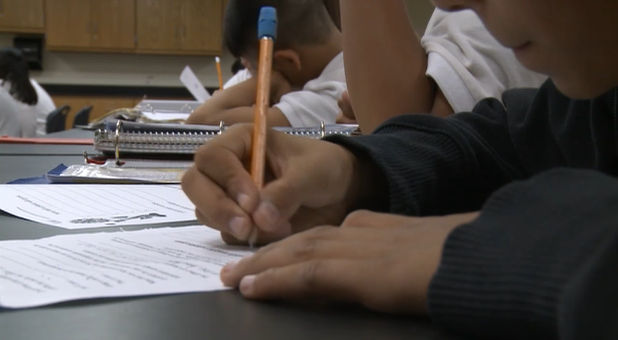New international test scores show American students lagging behind in math and performing about average in science and reading.
The Paris-based Organization for Economic Cooperation and Development tests 15-year-olds around the world every three years as part of the Program for International Student Assessment. Half a million students in 65 countries participated in the most recent test, administered in 2012.
The top average scores in each subject came from Shanghai, China’s largest city and also from Singapore, South Korea, Japan and Hong Kong.
U.S. Education Secretary Arne Duncan called the results a “picture of educational stagnation.”
However, critics of the current education reform movement say the scores are no reason for alarm.
“The test is only taken by about 6,000 kids in a country and the testing populations vary widely,” Christopher Tienken, assistant professor for education at Seton Hall University, said.
“In Singapore you won’t find a lot of students with special needs or second language learners in school by age 15, let alone in the testing population,” he said.
“The testing populations are very, very selective in some of these countries,” he added. “Now in America, we educate everybody. It’s part of our American exceptionalism and our commitment to liberty and justice for all. And so our testing pool includes all different kinds of students.”
Over the years, education reform proponents have used PISA test results and others to argue that the United States is losing its ability to compete globally.
But test critics like Tienken contend that standardized tests like PISA don’t evaluate creativity or innovation and can’t predict how a new generation will perform in the work force.
“We top the ranks in creativity, innovation, and entrepreneurship around the world,” he said. “So there’s a negative correlation between how you score on PISA and your creativity and innovation.”
Tienken and other critics of the current reform movement say poor tests results fuel the need to demonstrate crisis, which spurs growth in education funding.
“The current school reform narrative is that American schools are failing. Therefore we need to change things,” Tienken said. “Changing things in education results in good business for those companies that are involved in education reform.”
The current reform movement has focused on standardization via Common Core, a set of national education standards for K-12. So far, 45 states have adopted the standards but many states are now debating them.
Supporters say Common Core provides a way to ensure that all states are providing an appropriate level of education. Critics argue that the standards drive testing and curriculum and strip local control of schools.











































